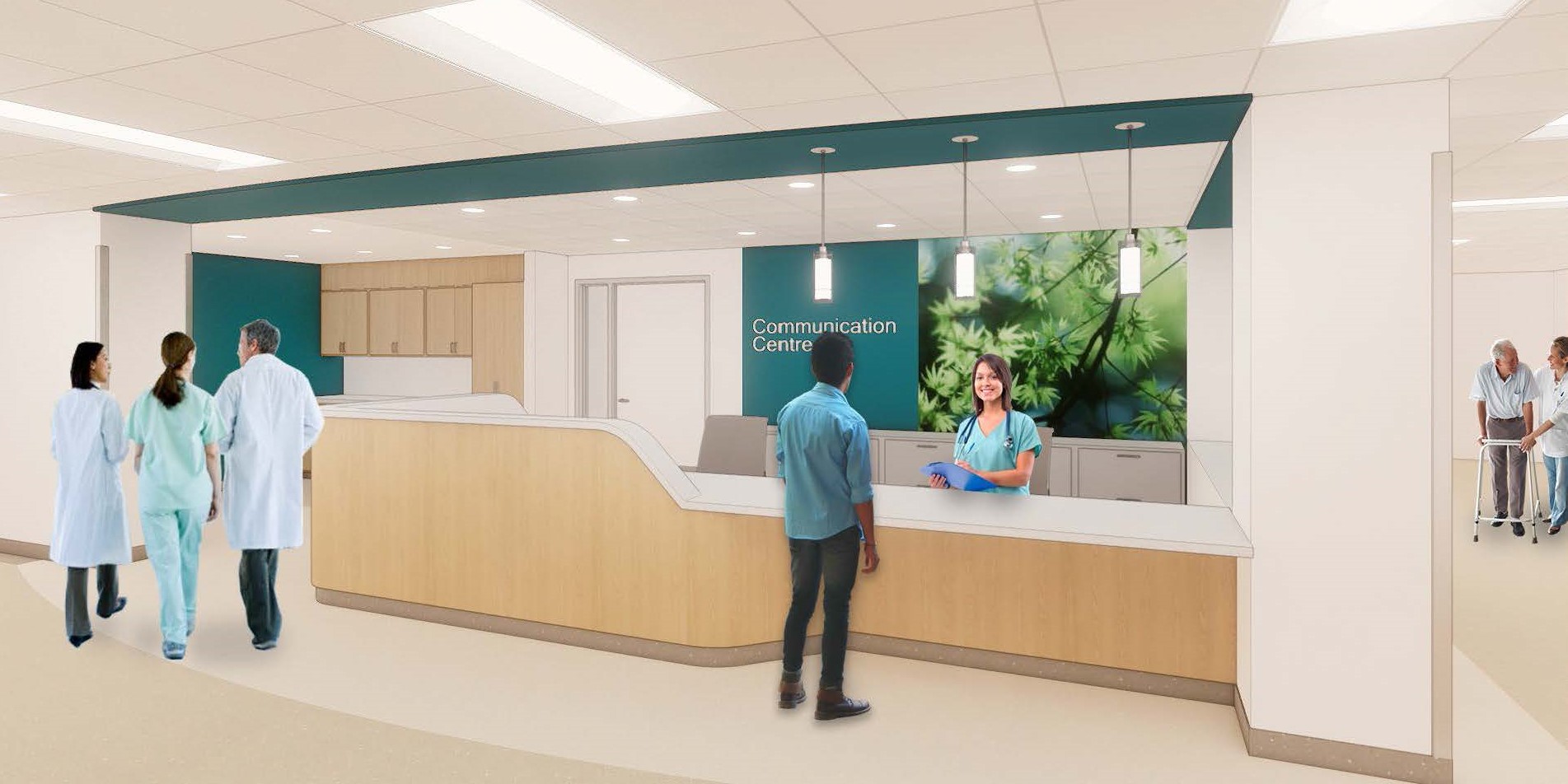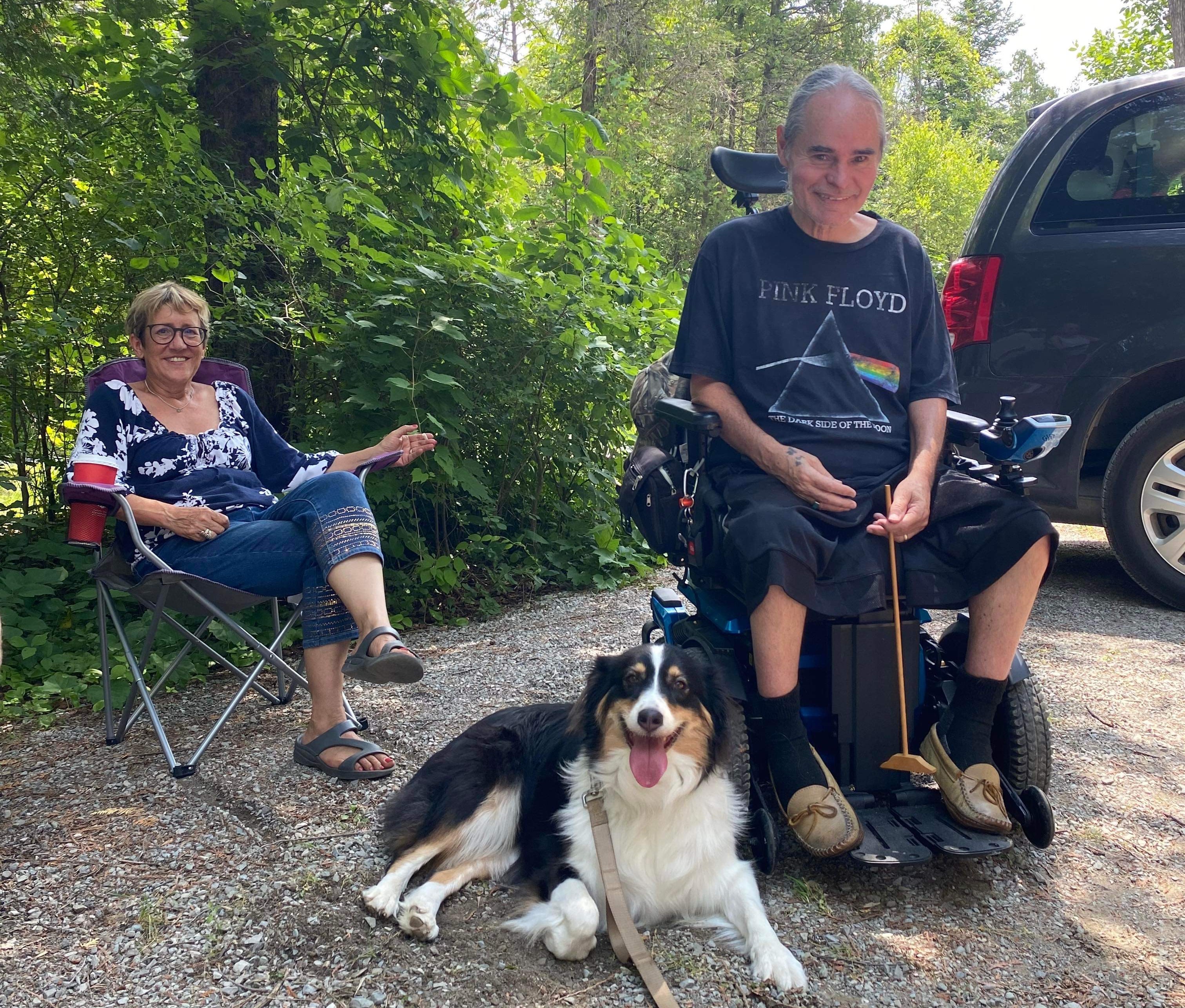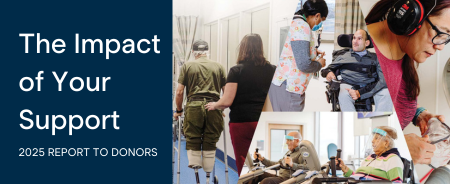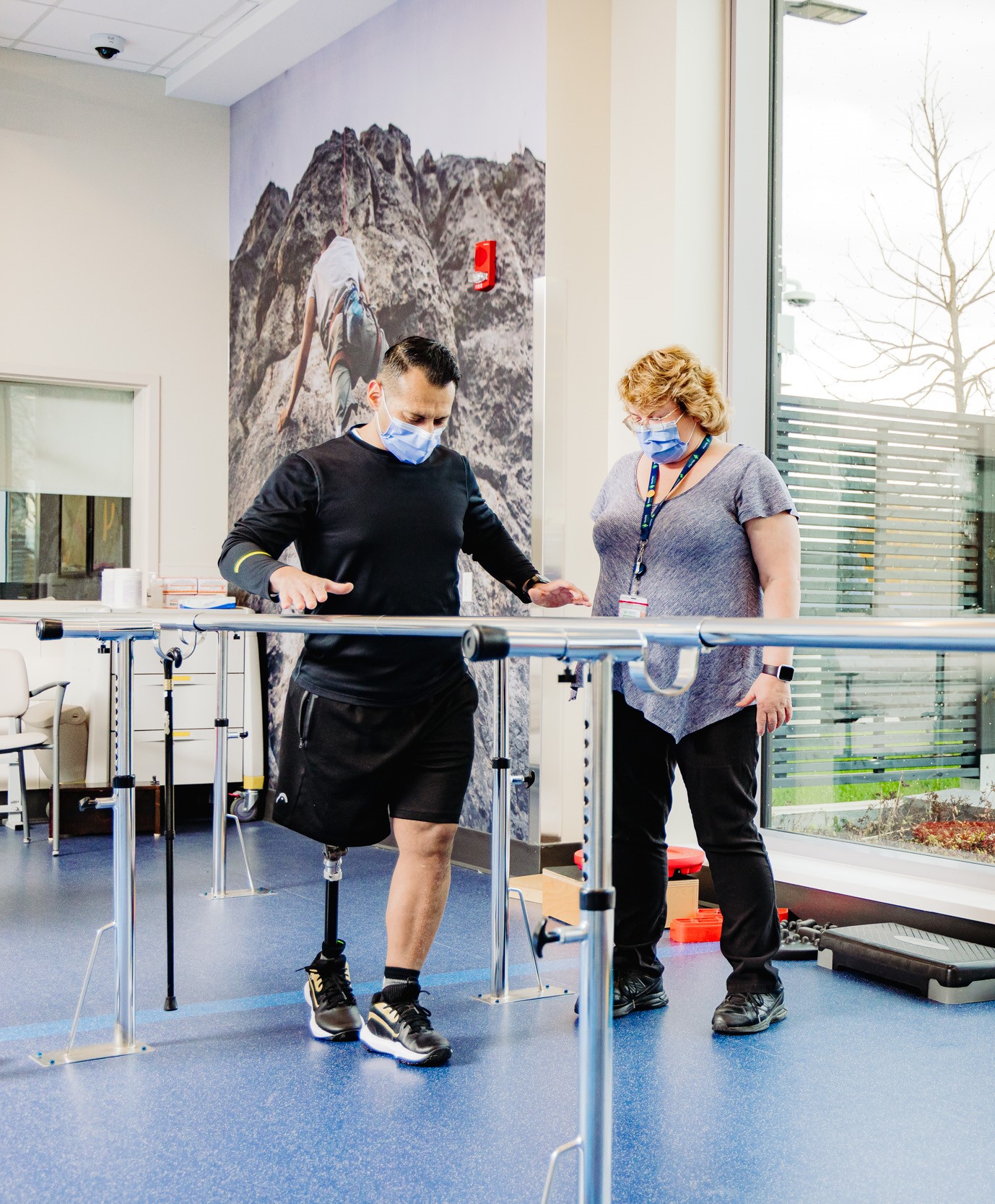
Peter Arbour
The Magic of Rehabilitation: Pete Arbour
Picture this as the opening of a romcom. A young single mother is walking her dog. The dog gets loose and starts running down the street. She shouts at a man on a scooter, asking him to help. He accelerates but can’t catch the dog.
Eventually, the animal is caught. The woman, who has sworn off dating since her marriage ended, reluctantly gets to know the man. He connects with her three active young boys. A few months later, she realizes that she is in love. “He’s just so nice, so non-judgmental,” she says. “You couldn’t meet a nicer guy than Pete—that’s what bowled me right over.” This is the real love story of Pete and Carolyn Arbour, who first met in 1995. Together they raised the three boys, eventually settling in Keswick Ontario. 
Pete has Muscular Dystrophy, which causes a slow weakening of the muscles. For years, the couple managed his very gradual decline on their own, with minimal medical support. Eighteen months ago, Pete began to develop breathing problems. “One night I lay down in bed and had a panic attack because I couldn’t breathe,” he says. “It was very scary.” Soon, he was spending nights sitting up in his wheelchair in the living room, uncomfortable and getting very little sleep. During the day while he was working the phones for the Shopping Channel, he would fall asleep while waiting for customers to get their credit card details. Sleep deprivation was taking a toll on Pete and Carolyn.
Their family doctor referred Pete for a sleep study. “I was over the moon when West Park called to schedule the appointment a few weeks later,” says Carolyn.
Minutes after the study started, the technologists realized that Pete needed help and started him on a bilevel positive airway pressure (BIPAP) machine. The BIPAP helped maintain pressure in his lungs, making it easier for him to breathe while lying down.
The morning after the study, he met with two exceptional doctors — Dr. Roger Goldstein, Head of Respiratory Medicine at West Park, and Dr. Hui Zhong Chai, an intensive care specialist from Singapore who was spending time at West Park to sharpen her skills in ventilation support. They realized that Pete’s diaphragm had become too weak to breathe without the assistance of gravity. As a result, he couldn’t lie down, and his oxygen levels were dangerously low.
“He was on the brink of becoming very ill,” Dr. Chai says. “Had he not come in for that appointment, he might have ended up in the ICU of an acute care hospital. We caught it just in time.” Dr. Goldstein agrees, adding, “Based on the study, we could see that there was potential for improvement—the challenge was to get a machine and get him started on it quickly.”
The team made arrangements to get a BIPAP machine from the Ministry of Health’s assistive devices program the next day, and scheduled Pete for a three-day stay to fine tune it. Although nervous about a hospital stay, Pete and Carolyn were impressed by the skillful and compassionate care he received at West Park. “The staff is amazing there,” Pete says.
After his first full night on the BIPAP machine, the improvement was immediate and profound. “Pete felt clearer in his head, brighter, and more alert and rested,” says Dr. Goldstein. “That’s the magic of rehabilitation.”
Pete now uses the BIPAP machine every night. “My quality of life is so different now,” he says. “I’m sleeping in my bed every night. It’s a 100 percent turnaround.” Adds Carolyn, “I got my Peter back. He is the man I married again, thanks to West Park.”
Which of course makes a perfect happy ending to the movie
This story originally appeared in the Fall 2023 issue of the Giving Lives Back newsletter. Click here to read the full issue.



